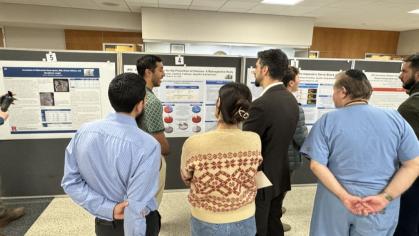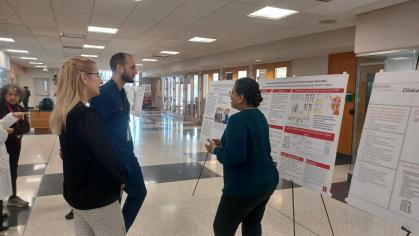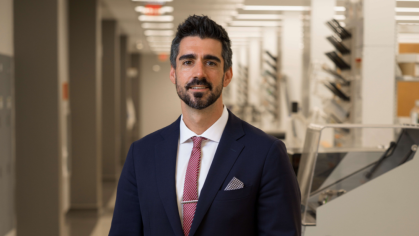Researcher Explores Link Between Iron Deficiency and Dental Caries
 Oral biologist Kabilan Gounder is researching the link between early childhood iron deficiency and dental caries in hopes of finding measures that could thwart the progression of the hard tissue disease that affects billions.
Oral biologist Kabilan Gounder is researching the link between early childhood iron deficiency and dental caries in hopes of finding measures that could thwart the progression of the hard tissue disease that affects billions.
Studies have shown that iron deficiency is a risk factor for tooth decay. But there has been little to no research on the mechanism that causes it to damage teeth during early childhood development, according to Gounder.
The health impact of iron-deficiency can be wide-ranging and severe. It is especially prevalent among low-income women and children in non-industrial countries. Iron-deficiency anemia (IDA) affects two billion people worldwide and disproportionately hurts women and children of color. It is the most common nutritional deficiency, responsible for 50 percent of all anemias. In the U.S., nine percent of children between the ages of 12-26 months are iron deficient.
“There is an intimate relationship between caries, diet, and nutrition, with poor nutrition being both a cause and a consequence of dental caries,” said Gounder.
Gounder’s pilot study, which he hopes to expand, is designed to pinpoint the specific oral bacterium in iron deficient conditions and study the mechanisms that can cause it to result in caries.
“A great void exists in comprehensively assessing the effects of prenatal and early life iron deficiency on the composition of dental hard tissue,’’ he said. “This research is especially significant because these diseases afflict a large proportion of minority children.’’
The study includes pregnant mice so the prenatal and neonatal effects of iron and iron deficiency can be assessed. “In humans, we’re not able to study how it progresses once we identify iron deficiency in children because we would of course have to treat them.’’ said Gounder. “Increased understanding could lead to the identification of microbial population shifts in the oral cavity of humanized mouse model with severe IDA. This could indicate that similar shifts occur in IDA patients with caries.”
Gounder’s team will collect plaque samples from four groups: children with no medical evidence of IDA or caries; children with IDA who are free of caries; children with caries but without IDA, and children with IDA and caries. They will transplant the plaque to see how the bacteria colonizes in the mice.
“This study combines state-of-the-art genomic microbiome evaluation with bioinformatics analyses of IDA and normal mice to track changes in the plaque microbiome,” said Gounder.
The study is being funded by a New Jersey Health Foundation core utilization grant. Gounder aims to find additional support to conduct it on a larger scale.
He’s hopeful that when more is known about how IDA contributes to dental caries, treatment can begin in utero or at infancy. “If we can identify it, we can prescribe the right antibiotic that targets the specific bacteria that causes caries,’’ he said.



